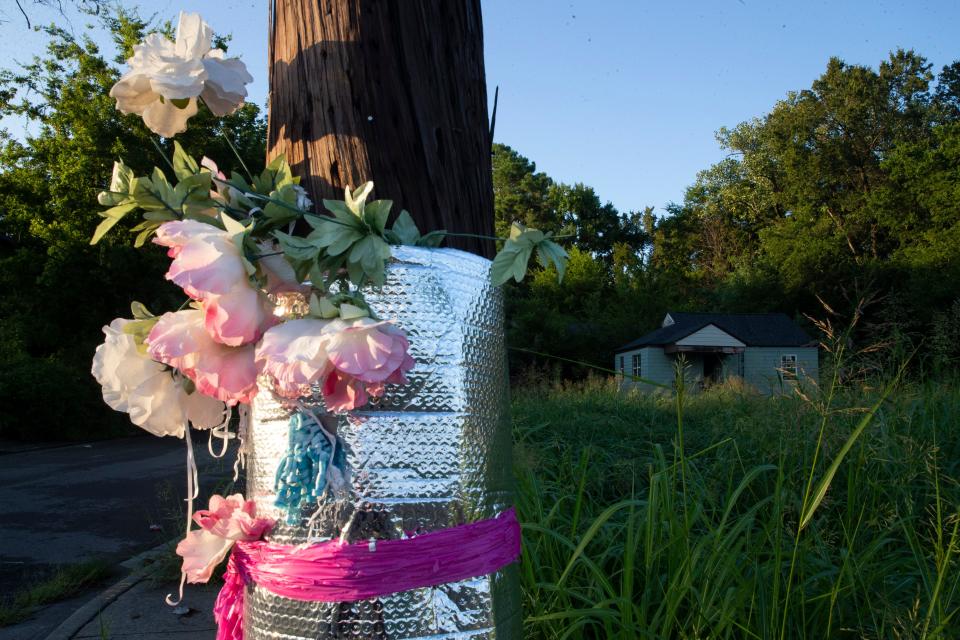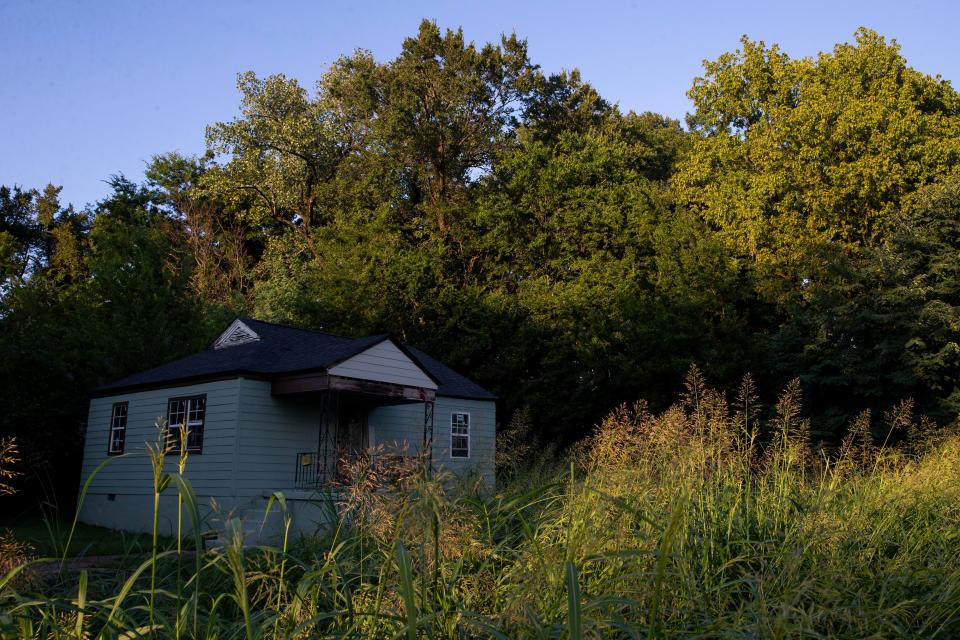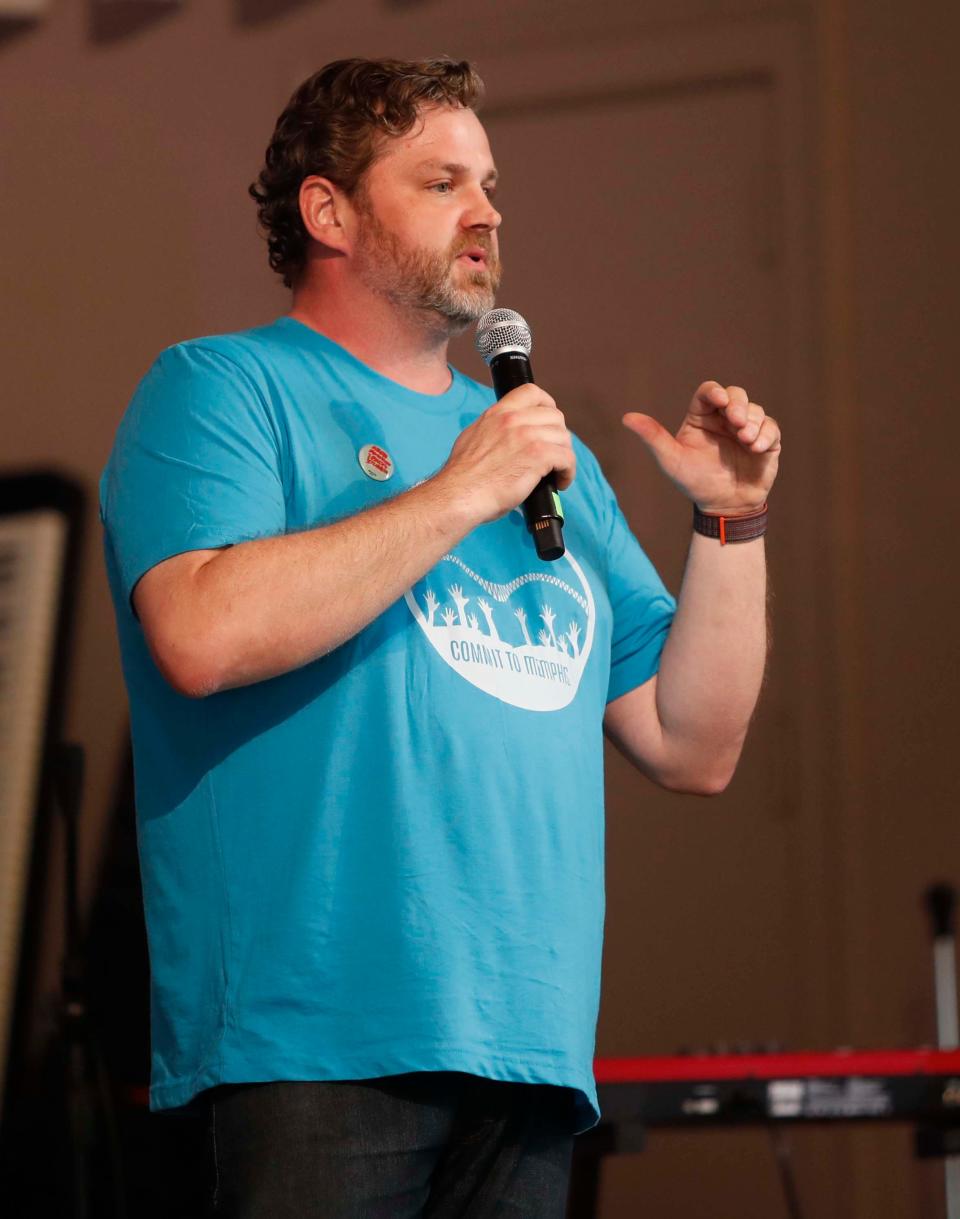It's been a year since Memphis hit a breaking point with crime. Have things changed?
When you Google “Memphis is tired,” Joyce Peterson pops up.
The veteran reporter and anchor for Action News 5 was shooting a live spot in Midtown on the night of Sept. 8, 2022, when her voice caught on the words, “Memphis is tired.”
“It is a very nerve-wracking night. It’s been a very difficult week…they’re going to find this guy, and until they do, stay inside,” Peterson said.
Minutes earlier, then-19-year-old Ezekiel Kelly had critically injured one man with a firearm and killed another woman in Midtown as part of a day-long shooting spree that, in total, left four dead and three others seriously injured.

As law enforcement scurried to catch up with one crime scene after another, Memphis police unleashed urgent warnings on social media for everyone to shelter in place; Kelly did not appear to have a target, he was firing on whoever was unlucky enough to cross his path.
Peterson’s temporary departure from media professional to exasperated civilian resonated deeply with Memphians; three small words did a lot of emotional heavy lifting on social media in the days following.
Memphis was tired because days earlier, the abduction and killing of 34-year-old Eliza Fletcher on Sept. 2 thrust the Bluff City into the national spotlight.
Weeks before Fletcher’s death, former Commercial Appeal editor and Whitehaven-area activist Yvonne D. Nelson was shot and killed in Raleigh.
Weeks before Nelson’s death, celebrated pastor Rev. Autura Eason-Williams was shot and killed during a random carjacking outside of her Whitehaven home.
And in between these well-publicized violent crimes, the daily stream of violent crime and homicides that tends to disproportionately occur in the city’s most vulnerable communities continued.
One year later, Memphis feels just as out of control to many. And while statistics show Memphis has seen more violent time periods in recent history, disagreements on how to change the course of violent crime still dominate the public sphere.
Crimes that occurred in some of the most harrowing weeks of 2022 are now slowly making their way through the justice system. Below is a snapshot of where Memphis stands, one year later.
'Something has to change'
Dorothy Perry lives in a bungalow with masonry covering the front of the house in a shady South Memphis neighborhood.
She remembers the day law enforcement swarmed her block and zeroed in on the overgrown lot next door in early September 2022.

Tire tracks through the overgrown property alerted police to the possibility they might find the remains of Fletcher, who had been missing for 4 days at the time, on the property.
They did.
“I cried that day,” Perry said. “I cry anytime I hear of something like that happening. In any part of the city.”
Perry moved back to Memphis from California and now lives in her late mother’s house. Her home has been broken into “a few times” and worries generally about the state of Memphis.
“It’s a shame I have to be so careful when I go out,” Perry said.
In the year that has passed since Fletcher was found next door to her, Memphis police have documented over 500 offenses in a half-mile radius of her house, ranging from simple theft to vandalism to murder.
As overwhelming as it feels to Perry and to others, the data gathered from the FBI and the Tennessee Bureau of Investigation show that while the violent crime rate in Memphis has spiked since the onset of the COVID-19 pandemic — it’s still overall down since the mid to late 90s.
By 1996, the violent crime rate in Memphis was 1,112.7 incidents — including homicides, aggravated assaults, rape, burglaries, larcenies and motor vehicle thefts — per 100,000 Memphians, according to data compiled by the FBI and TBI.
News coverage at the time was saturated with reports of gang activity and various forms of organized crime.
Within three years the violent crime rate dropped to 836.8 incidents per 100,000 people by 1999.
The violent crime rate would fluctuate over the next several years, spiking again in 2006 with 1,035 incidents per 100,000 people. Around this time, the Memphis Shelby County Crime Commission was formed with the idea of tracking crime in order to present a fuller picture to government and non-government entities.
Crime in Memphis plummeted to its lowest point in over 30 years in 2015, when 739 incidents per 100,000 people occurred yearly. By 2022, that rate was back up to 982.
None of that context matters to Perry, who can list a few reasons why she believes Memphis feels more dangerous now than ever.
“It’s not a good city,” Perry said, “Something has to change.”
A handful of officers for every square mile
Memphis Police Department Assistant Chief Don Crowe has been on the police force for more than 30 years.
He has seen murders, abductions, and a number of horrific situations unfold, but not necessarily “two back to back” like the week of Fletcher’s disappearance and Kelly’s alleged rampage.
That week, he said, “It was hard to get officers to go home and rest because they wanted to keep working.”
“Every tip or lead that came in brought a spark of energy or excitement, and when it didn’t pan out — it brought exhaustion,” Crowe said. “When Ms. Fletcher was found … the command post was full of tears.”
As Memphis’ crime rate continues to trend up amid a crowded mayoral candidate field, approaches to lowering the crime rate dominate candidate discourse in forums and debates.
Regardless of whether candidates champion investing more in at-risk youth and earlier interventions to alleviate risk factors or a more traditional “tough on crime” approach — nearly all of the candidates have espoused the need for more police.
According to the FBI’s most recent Crime in America report, in 2019 Memphis was 7th among 19 similar-sized cities — ahead of Nashville, St. Louis, and Atlanta— for the sheer size of the police force.
Today, the crime commission lists an active complement of 1,959 officers. Broken down over the U.S. Census’ count of 297 square miles of both urban density and ample sprawl — there are roughly 6.6 officers for every square Memphis mile.
'What are we going to do about it?'
On the night of the shooting rampage, Memphis chef Kelly English left his house in Midtown and arrived at the Second Line to a crowd of people feverishly scanning the news for updates.
He remembers hearing some say it was time to leave Memphis.
The next morning he had a couple of thoughts. One was that “nobody was wrong for what they were feeling.”
The next was "What are we going to do about it,” English said.

Shortly after, English invited every community stakeholder he could think of, and then some, into a series of discussions that searched for real and practical ways to abate the problems in Memphis that beget violence.
The group, now called Commit to Memphis, is now a growing nonprofit. In April, Commit to Memphis hosted a mayoral forum with questions submitted by Memphis residents and leaders.
“We want to be an extension cord and connect the right people with sources of power. We want to amplify this work that’s already being done,” English said.
Commit to Memphis is new, but the work the group is seeking to “amplify” has been ongoing. And the group highlights another critical faction of Memphis that is not as tabulated as crime statistics — civic involvement.
Memphis is home to thousands of nonprofits and grassroots organizations that range vastly in size and causes.
More: Can Alliance Healthcare Services' new facility change mental health care in Memphis?
The impact of these groups is measured internally and individually; the impact of Memphis’ nonprofit and grassroots infrastructures as a whole isn’t nearly as measurable.
While preliminary data submitted to TBI and then aggregated by the Public Safety Institute at the University of Memphis shows increases across the board in major violent crime and property crime compared to this time last year, no such data exists for solutions that are in the process of being implemented.
The realities of crime may win out in the public’s consciousness over the number of Memphians working to reverse the trend. And that knowledge is why English has learned over the last year to meet people where they are in their feelings towards the city.
“Memphis has taught me to just listen,” English said.
And on better days, the work of improving the quality of life that was spurred by that brutal week in September 2022 reminds English of Leonard Cohen’s 1992 song, “Anthem.”
“There’s a crack, a crack in everything,” Cohen wrote. “That’s how the light gets in.”
Micaela Watts is a reporter for The Commercial Appeal covering issues tied to healthcare, resource access, and equity. She can be reached at micaela.watts@commercialappeal.com.
This article originally appeared on Memphis Commercial Appeal: After violent year, is Memphis' crime out of control or just perception?

